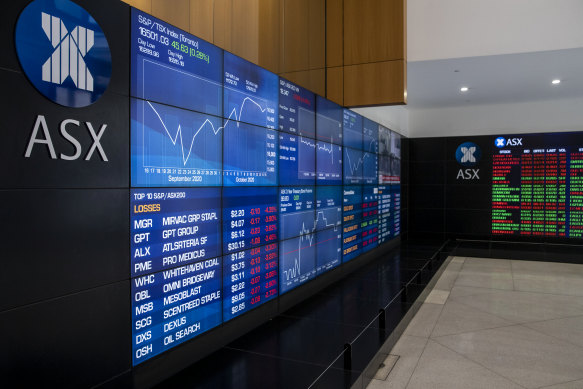Australian shares open flat as investors back coal but weigh rate hikes
By Millie Muroi
The Australian share market opened broadly flat on Friday morning, as the materials sector gained, but investors stayed subdued as they considered both the benefits of China’s reopening and concerns about further rate rises from the US Federal Reserve.
The S&P/ASX200 was up 8.6 points, or 0.1 percent, to 7,072.2 on Friday morning, weighed down by the health care and real estate sectors. But investors were more optimistic about energy on hopes that China will soon begin loosening restrictions on coal imports from Australia.
The movement followed the trend of ASX futures which were up 26 points, or 0.26 per cent, to 7025 this morning.

Yancoal led the lifters, gaining 3.5 per cent, as other coal companies such as Whitehaven Coal and New Hope Corporation added 1 per cent and 1.7 per cent each at the market open. Heavyweight BHP was among the top climbers, adding 2.2 per cent.
Real estate (down 1.5 per cent), healthcare (down 1.2 per cent) and information technology (down 1 per cent) sectors dropped the most, as technology company Xero shed 2.8 per cent and medical equipment company Resmed lost 2.3 per cent.
On Wall Street, the main indices closed lower on Friday morning on the back of better than expected jobs figures that showed private sector employment was continuing to be strong fuelling inflation concerns.
The Dow Jones Industrial Average fell 339.7 points, or 1 per cent, to 32,930.1, the S&P 500 lost 44.9 points, or 1.2 per cent, to 3,808.1 and the Nasdaq Composite dropped 153.5 points, or 1.5 per cent, to 10,305.2.
The falls came as the ADP National Employment report showed a higher-than-expected rise in private employment in December. Another report showed weekly jobless claims fell last week. Another US data set released this week showed a moderate fall in US job openings, growing evidence the labor market remains tight.
While a strong labor market would often be welcomed as a sign of economic strength investors currently see it as a key reason for the Federal Reserve to keep interest rates high.
“It’s very clear that good news on the labor market means bad news for the stock market. Data is showing that the labor market is very resilient,” said Anthony Saglimbene, chief market strategist at Ameriprise in Tory Michigan.
“As long as the labor market is resilient, the Federal Reserve has to continue to tighten financial conditions to bring inflation down,” said that strategist who expects investors to be keenly focused on wage inflation in Friday’s jobs report.
The indexes had pared losses a little during the session after St Louis Federal Reserve leader James Bullard in an afternoon appearance that 2023 could finally bring some welcome relief on the inflation front.
While Saglimbene noted that Bullard’s comments were not surprising, his suggestion that rate hikes were starting to show some signs of dampening inflation, provided some reassurance.
In the previous session, Wall Street’s main indexes erased some of their gains after minutes from the Fed’s December meeting showed the central bank was laser-focused on fighting inflation even as officials agreed to slow the pace of rate hikes to limit risks to economic growth.
Earlier in the day both Kansas City Fed leader Esther George and Atlanta President Raphael Bostic stressed that the central bank’s priority was to curb inflation through policy tightening. Traders see rates peaking at slightly above 5 per cent in June.
The more comprehensive non-farm payrolls report due on Friday, will be looked to for further clues on labor demand and the rate hike trajectory.
With Reuters
Most Viewed in Business
Source: Thanks smh.com